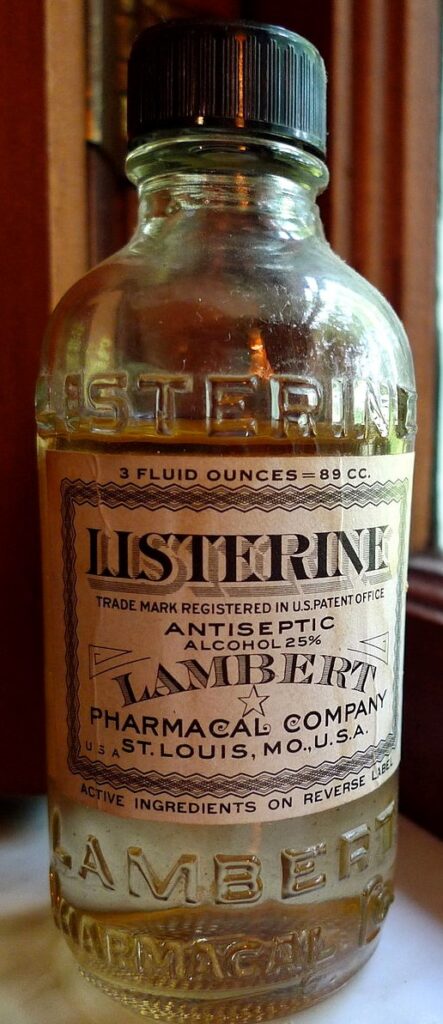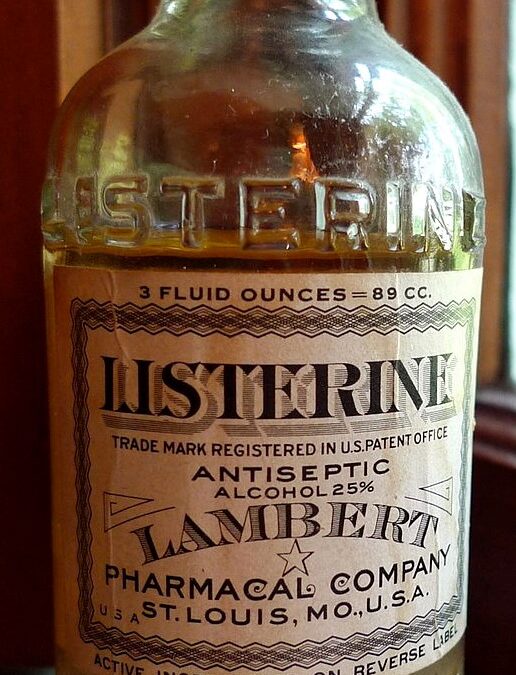Consumer products come and go. Some exist only for the few weeks before a holiday; others hang around for years, even decades. But others approach immortality, still going strong after a century or more in the marketplace. To name a few: Clorox (1913); Ex-Lax (1906); Vicks Vapo-Rub (1905); Kellog’s Corn Flakes (1894); Coca-Cola (1894); John Deere (1837); Colgate (1806); Jim Beam (1795).
But one stands out, not as much for its longevity but for the history behind the brand name. In 1879, an American physician named Joseph Lawrence started selling an all-purpose antiseptic. At first it was sold as a good-for what-ails-you elixir, but in the early 20th century it settled into the American psyche as a mouthwash, where it’s been every since. Dr. Lawrence named it Listerine, in honor of Joseph Lister, the British surgeon who brought antiseptic practice to the management of surgical wounds.

“The Butchering Art” by British medical historian Lindsey Fitzharris is an entertaining account of Lister’s life. The book opens with good news and bad news: first, with the introduction of surgical anesthesia, but then with a disturbing picture of 19th-century surgery and the hospitals in which surgeons did their work. In the pre-anesthesia era (which was all of human history until 1846), surgery within the abdominal or chest cavities was out of the question on a conscious patient, and was only possible on the extremities or on problems on or just below the skin. For obvious reasons speed was of the essence. The best surgeons, for example, could amputate a leg in under a minute, with the patient, screaming in agony, pinned to the operating table by brawny assistants.
Although surgeries became much less brutal with the advent of anesthesia, surgical patients were still lucky to leave the hospital alive. That was because doctors and hospitals paid little or no attention to cleanliness, either in the operating room or on the hospital ward. Surgeons went from one case to the next without washing their hands or cleaning their instruments. The surgeon wore the same smelly, blood-stained apron over their street clothes until it fell apart.
Hospital wards were lice-infested, filthy and reeking of bodily excretions. It’s no wonder that wound infections were rampant, and lethal if the infection became generalized, which was often. These conditions, in Victorian London, would be inconceivable almost anywhere in the world today. Surgeons regretted their appalling mortality rates, but accepted these deaths as unavoidable. In their defense, they had no idea that these deadly complications were caused by pathogenic bacteria. They chose to cling to vague, weather-beaten notions like “miasma” or “poisonous effluvia” in the air.
Lister Didn’t Look the Other Way
As Fitzharris follows Lister’s career, we learn that the young surgeon was not satisfied with the status quo. He instituted basic cleanliness measures on the hospital wards, but did not put a dent in the mortality rates until he learned of the work of a French chemist named Louis Pasteur. Pasteur had discovered that microbes could cause the spoilage of beer as it fermented. Lister theorized that similar microbes entering wounds from the air could be responsible for wound infections. He sought to find an antiseptic agent that could be applied to wounds to prevent infection without being destructive to human tissue. He finally discovered that carbolic acid did the trick. Lister developed a rigorous procedure for dressing wounds, and brought about impressive declines in infections.
Despite his success, he faced staunch resistance from many of his colleagues, who found his techniques tedious, and who at any rate simply refused to believe in germ theory. Some hospitals formally banned the practice. But Lister persisted, and eventually turned the tide. It was from a lecture in Philadelphia during Lister’s tour in the U.S. that Dr. Lawrence was inspired to concoct his own antiseptic and cleverly name it after the father of modern surgical antisepsis.
Déjà Vu All Over Again
Lister’s scientific journey was not unlike that of Andreas Vesalius, the father of modern human anatomy, who four centuries earlier faced fierce resistance to his anatomical findings before being vindicated, by, well, the undeniable evidence. Like Vesalius’s breakthrough in anatomy, Lister’s breakthrough in wound care paved the way to further advances that eclipsed his original work. But Lister’s achievement, along with the advent of anesthesia, allowed surgery to enter the modern era. The next time you swish that mouthwash in the dentist chair, send a kind thought to the memory of Joseph Lister. If you’ve ever had surgery, he’s a big reason why you’re here to read this.
Vesalius, by the way, discovered several rather important anatomical structures and had several named after him, but amazingly, none stuck except the the os vesalianum, a rare accessory bone in the foot located near the base of the fifth metatarsal (thanks to my friend Efrain Miranda, PhD for this bit of anatomical arcana). Not to take anything away from Dr. Lister, but no fair!

